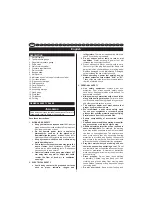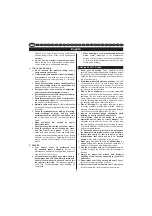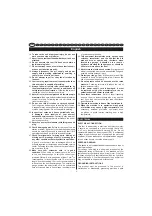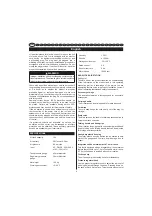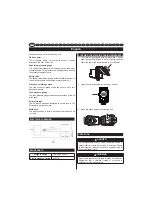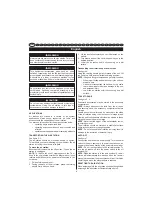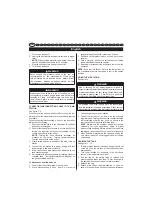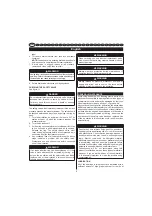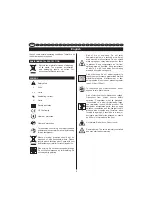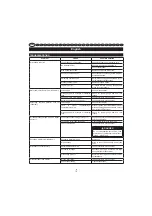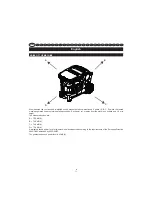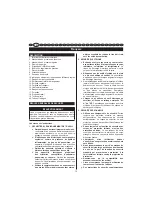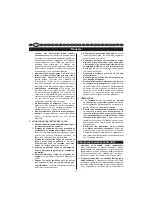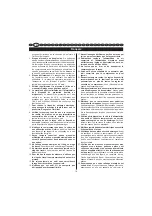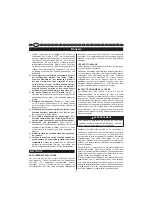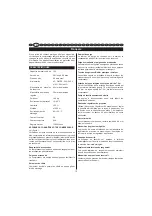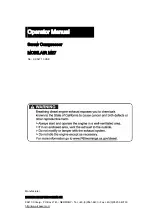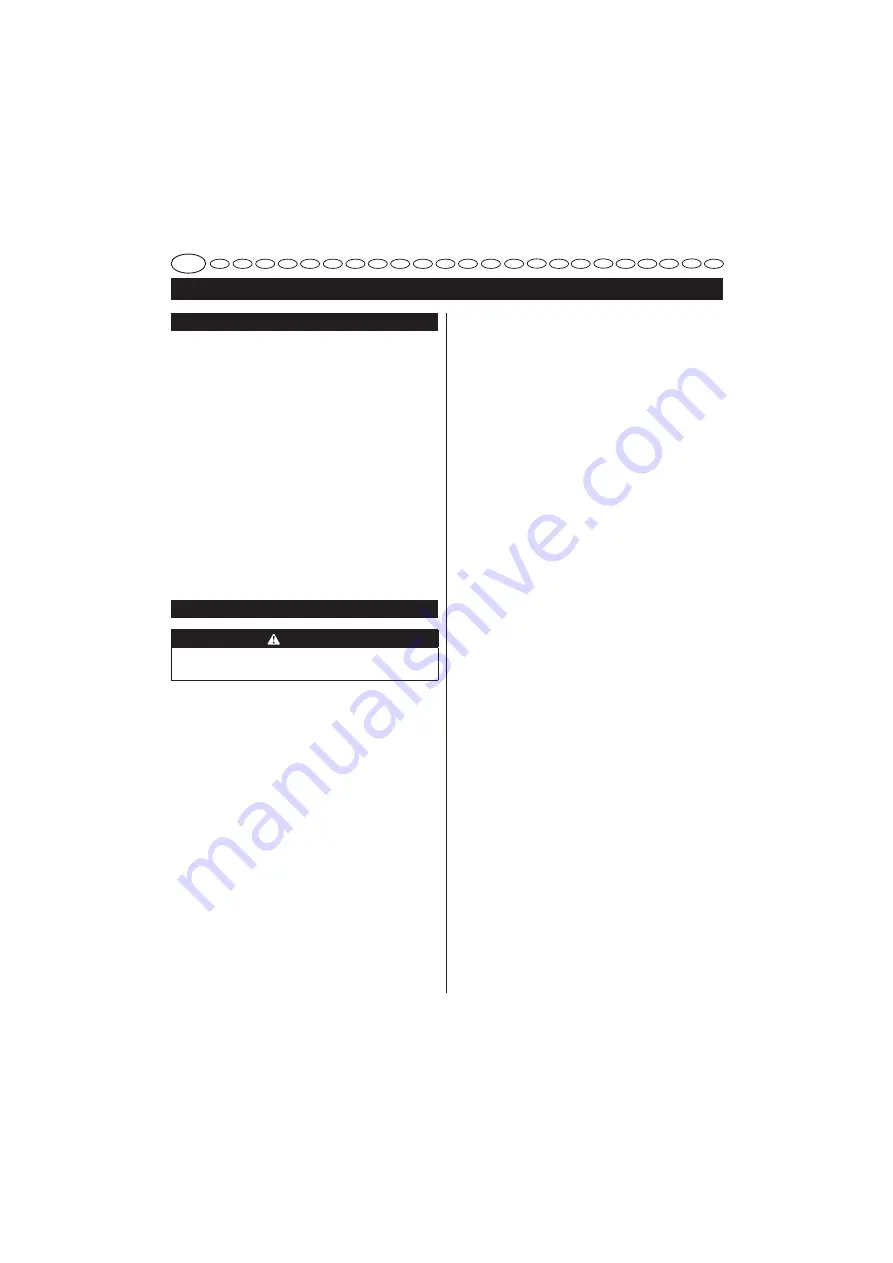
1
English
GB
FR
DE
ES
IT
NL
PT
DK
SE
FI
NO
RU
PL
CZ
HU
RO
LV
LT
EE
HR
SI
SK
GR
TR
DESCRIPTION
1. Auto/off
switch
2. Tank pressure gauge
3. Regulatory pressure gauge
4. Drain
valve
5. Quick reference label
6. Pressure regulator knob
7. Quick
coupler
8. Bungee
wrap
9. Safety
valve
10. Indicates an item on the quick reference label
11. Coil hose retainer
12. Side connect storage
13. Folding handle
14. Carrying handle
15. Power cord
16. Accessory storage
17. Hand grips
18. Work seat
19. Coiled hose
20. Pull ring
GENERAL SAFETY RULES
WARNING
Read and understand tool labels and manual. Failure to
follow could result in death or serious injury.
Save these instructions.
1. WORK
AREA
SAFETY
a.
Keep your work area clean and well lit.
Cluttered
areas and benches invite accidents. Floor must not
be slippery from wax or dust.
b.
Do not operate power tools in explosive
atmospheres, such as in the presence of
flammable liquids, gases, or dust.
Power tools
create sparks which may ignite the dust or fumes.
c.
Keep bystanders, children, and visitors away
while operating tools.
d.
Power tools create sparks which may ignite the
dust or fumes.
Keep bystanders, children, and
visitors away while operating tools. Distractions
can cause you to lose control.
e.
Operate air station in an open area at least 457
mm away from any wall or object that could
restrict the flow of fresh air to ventilation
openings.
2. ELECTRICAL
SAFETY
a.
Avoid body contact with grounded surfaces
such as pipes, radiators, ranges, and
refrigerators.
There is an increased risk of electric
shock if your body is grounded.
b.
Do not expose power tools to rain or wet
conditions.
Water entering a power tool will
increase the risk of electric shock.
c. Do not abuse cord. Never use the cord to carry
the tool or pull the plug from an outlet. Keep cord
away from heat, oil, sharp edges, or moving parts.
Replace damaged cords immediately. Damaged
cords increase the risk of electric shock.
d.
When operating a power tool outside, use an
outdoor extension cord marked "W-A" or "W".
These cords are rated for outdoor use and reduce
the risk of electric shock.
3. PERSONAL
SAFETY
a.
Use safety equipment.
Always wear eye
protection. Dust mask, nonskid safety shoes,
hard hat, or hearing protection must be used for
appropriate conditions.
b.
Always wear eye protection with side shields,
along with hearing protection.
Failure to do so
could result in objects being thrown into your eyes
and other possible serious injuries.
c.
The employer and/or user must ensure that
proper eye protection is worn.
d.
We recommend a wide vision safety mask
for use over eyeglasses or standard safety
glasses that provide protection against flying
particles both from the front and side.
e.
Ensure compatibility of accessories before
using.
f.
Read and understand the operating manual for
any accessories or air tools before using.
g.
Additional safety protection will be required in
some environments.
For example, the working
area may include exposure to a noise level which
can lead to hearing damage. The employer and
user must ensure that any necessary hearing
protection is provided and used by the operator
and others in the work area. Some environments
will require the use of head protection equipment.
h.
Stay alert, watch what you are doing, and use
common sense when operating a tool.
Do not
use tool while tired or under the in uence of drugs,
alcohol or medication. A moment of inattention
while operating power tools may result in serious
personal injury.
i.
Dress properly.
Do not wear loose clothing
or jewellery. Contain long hair. Keep your hair,
clothing, and gloves away from moving parts.
Loose clothes, jewellery, or long hair can be caught
in moving parts.
j.
Do not overreach.
Keep proper footing and
Summary of Contents for Ryobi EAS10A15
Page 1: ......


